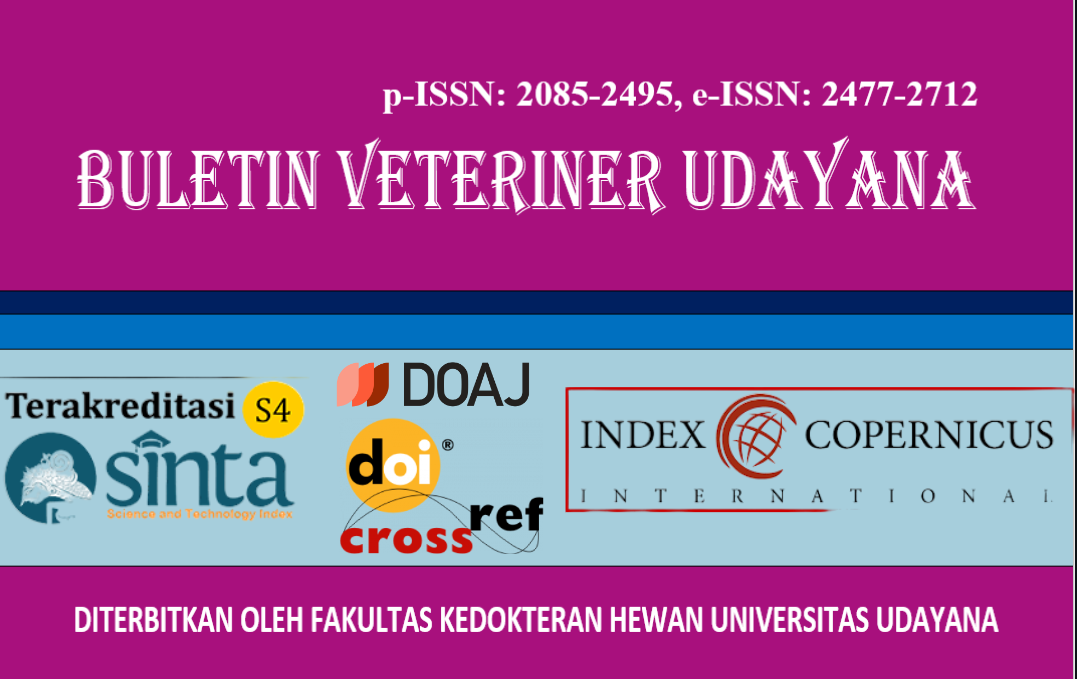SURGICAL TEATMENT OF VENTRAL HERNIA WITH INTESTINAL REPOSITION IN A 2 YEAR OLD LOCAL FEMALE CAT
DOI:
https://doi.org/10.24843/bulvet.2025.v17.i05.p21Keywords:
hernia ventralis, laparatomi, reposisi, ususAbstract
Ventral hernia is an abnormality of the abdominal wall that is generally caused by traumatic factors, characterized by a lump containing abdominal visceral organs but still covered by skin and subcutaneous tissue. A two-year-old female domestic cat weighing 3 kg presented with a soft lump on the ventral abdomen for five months. The contents of the lump could be pushed into the abdominal cavity during palpation, but reappeared after pressure was released. Physical examination revealed a hernia opening and hernia contents. Supporting examination using radiography with barium sulfate (BaSO4) contrast showed that the cat had a ventral hernia containing the intestine with a favorable prognosis. The surgical procedure was performed using laparotomy to reposition the hernia contents back into the abdominal cavity and close the abdominal cavity with sutures. The surgery was performed under general anesthesia using a combination of xylazine at a dose of 1 mg/kg BW and ketamine at a dose of 5 mg/kg BW intravenously through a gradual infusion. Postoperatively, the cat was given the antibiotic Cefotaxime Sodium at a dose of 20 mg/kg BW twice daily for three days intravenously through an infusion, followed by Cefixime at a dose of 10 mg/kg BW twice daily for seven days orally. On the tenth day, the surgical wound showed good healing, characterized by a dry wound, removal of sutures, good appetite and drinking, and normal defecation and urination. For optimal results, post-operative care must still be considered, including monitoring the condition of the wound and the overall physical condition of the animal.




